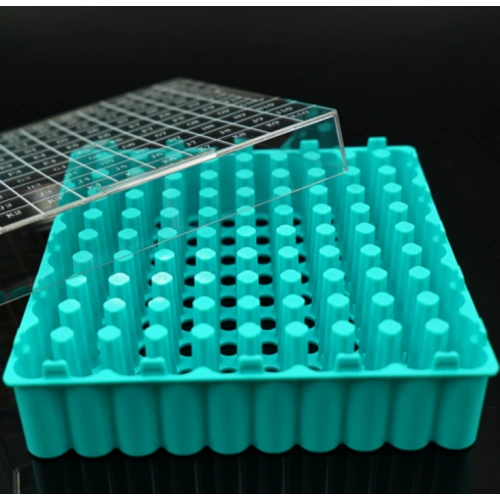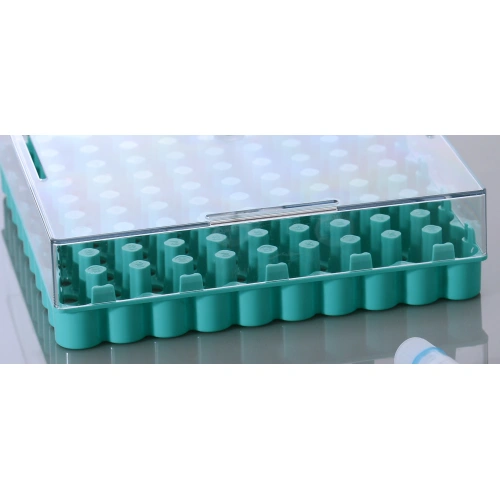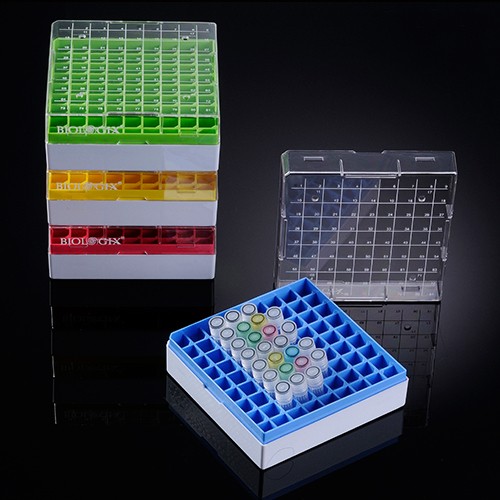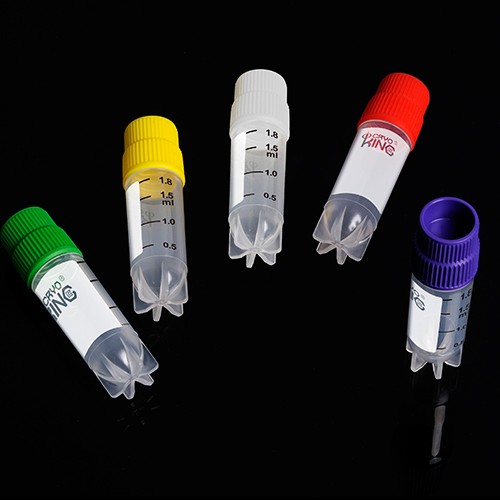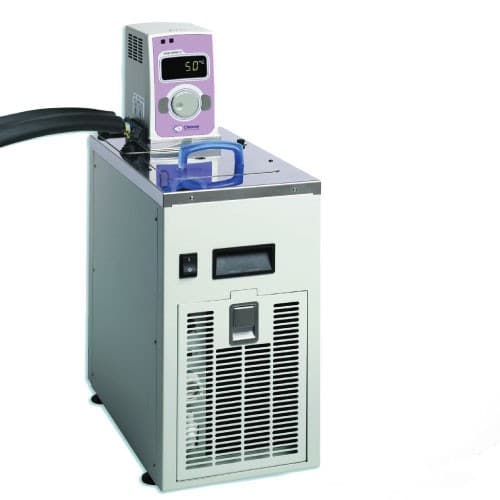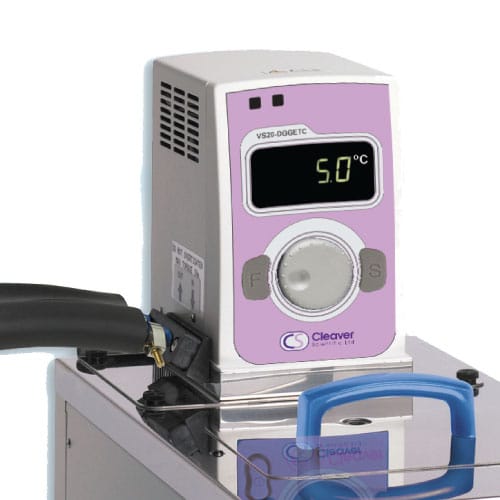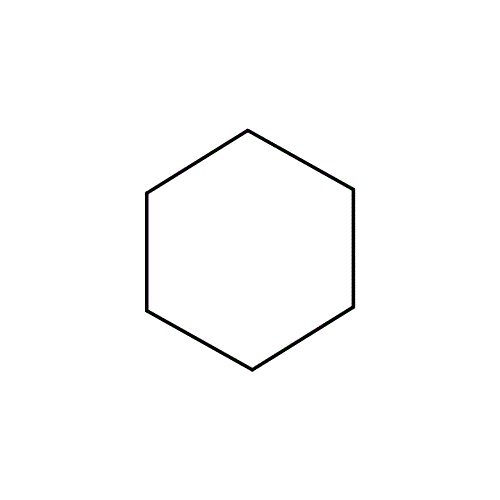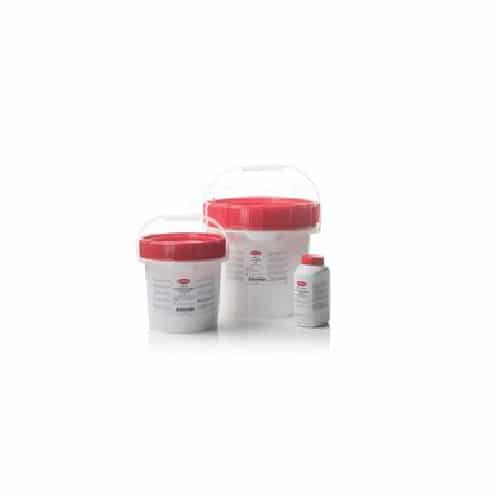
Cronobacter Screening Broth (CSB)
RM539.00Brand:
Thermo ScientificTM OxoidTM
- Oxoid Cronobacter Screening Broth Base (CSB) is a selective enrichment broth for isolation of Cronobacter spp, from food and environmental samples.
- Requires Vancomycin Supplement, 5mg, Part No. SR0247E.
Cronobacter Screening Broth Base (CSB), Oxoid Composition
| Typical Formula* |
gm/litre |
| Peptone |
10.0 |
| Meat extract |
3.0 |
| Sodium chloride |
5.0 |
| Bromocresol purple |
40 mg |
| Sucrose |
10.0 |
| pH 7.4 ± 0.2 @ 25°C |
Cronobacter Screening Broth (CSB), Oxoid Preparation:
Dissolve 14.02g in 500ml of distilled water. Sterilize by autoclaving at 121°C for 15 minutes. Cool to approximately 50°C, and aseptically add the contents of 1 vial of Vancomycin Supplement (5mg) (SR0247E) reconstituted as directed. Mix well and aseptically dispense into sterile containers.
Storage conditions and Shelf life
Store the dehydrated medium at 10-30°C and use before the expiry date on the label
Store the prepared medium at 2-8°C

Crossley Milk Medium 500g
RM657.00Brand:
Thermo ScientificTM OxoidTM
A simple medium originally described by Crossley for the routine examination of canned food samples for anaerobic bacteria, this medium has evolved as the result of comparative trials carried out by Crossley with several standard media. It is capable of giving rapid growth without the use of special anaerobic apparatus, yet the bacteria detected may be provisionally identified by their reactions upon the medium.
Crossley milk medium, Oxoid Composition
| Typical Formula* |
gm/litre |
| Skim milk powder |
100.0 |
| Peptone |
10.0 |
| Bromocresol purple |
0.1 |
| pH 6.8 ± 0.2 @ 25°C |
Crossley milk medium, Oxoid Preparation:
Cream 110g of the powder with a little distilled water and gradually dilute to 1 litre with continuous mixing. Tube in 10ml quantities and autoclave at 121°C for 5 minutes.
Storage conditions and Shelf life
Store the dehydrated medium at 10-30°C and use before the expiry date on the label.
Store the prepared medium at 2-8°C.
Cryogenic Box
RM840.00Brand:
NEST
Characteristics
● Temperature range: -196℃ to +70℃
● Individual package
● Clear polycarbonate cover for easy identification
● Alphanumeric grid for easy sample identification
● Each box includes drain holes and air vents to minimise condensation
Cryogenic Storage Box (Polycarbonate)
Brand:
Biologix
This item is not available at the moment. Please contact us for more information.
Characteristics
● Made of tough polycarbonate; chemically resistant to alcohols
and mild organic solvents
● Can be repeatedly frozen and thawed
● 5×5 (25-well), 9×9 (81-well), or 10×10 (100-well) boxes available
● Compatible with 0.5ml, 1.5ml or 2.0ml microtubes and cryogenic vials
● Boxes feature numbered grids for sample identification
● Drain holes and air vents minimize condensation
● Five assorted colors available
● Suitable for storage in mechanical freezers or liquid nitrogen
● Temperature range: stable from -196°C to 121°C
Cryogenic Storage Box (Polypropylene)
RM0.00Brand:
Biologix
This item is not available at the moment. Please contact us for more information.
Characteristics
● Made of polypropylene, chemically resistant to alcohols and mild organic solvents
● Can be repeatedly frozen and thawed
● 5×5 (25-well), 9×9 (81-well), or 10×10 (100-well) boxes available
● Compatible with 0.5ml, 1.5ml or 2.0ml microtubes and cryogenic vials
● Boxes feature numbered grids for sample identification
● Drain holes and air vents minimize condensation
● Five assorted colors available
● Suitable for storage in mechanical freezers
● Temperature range: stable from -90°C to 121°C
CryoKING Cryogenic Vials
RM0.00Brand:
Biologix
This item is not available at the moment. Please contact us for more information.
Characteristics
● Made of medical grade polypropylene; can be repeatedly frozen and thawed
● 2ml cryogenic vials are available with either internal or external screw threads
● External thread vials’ caps lack o-rings, which reduces the possibility of contamination
● DNase & RNase free, endotoxin free, foreign DNA free
● Working temperature: stable from -196°C to 121°C
● Suitable for liquid nitrogen freezing
●Internal thread vials’ caps have o-rings, which promotes more secure sealing
CSL Chiller
RM0.00Brand:
Cleaver Scientific
The CSL-CHILLER is available ready assembled with the thermostat mounted on the refrigerator and supplied with insulated tubing and clips to form a system ready to use. Supported by an industry leading 3 year warranty emphasising our confidence in the reliability of our product.
The system comprises the following:
- 5 litre tank with drain tap
- relay control for refrigeration on/off
- cooling power 140W @ 0°C
- temperature range -20 to 100°C

CSL-Education Pack
RM0.00Brand:
Cleaver Scientific
New from Cleaver Scientific is a complete low cost DNA electrophoresis Reagent kit. This kit contains everything required for 20 mini DNA gels in one handy package.
Includes:
- 5g Agarose x 3
- TBE Buffer (2 pouches)
- 1 KB Markers x 2
- Runsafe DNA Stain

Ct10 Colistin Sulphate
RM0.00Brand:
Thermo ScientificTM OxoidTM

Ct25 Colistin Sulphate
RM0.00Brand:
Thermo ScientificTM OxoidTM

Ctx30 Cefotaxime
RM80.00Brand:
Thermo ScientificTM OxoidTM

Ctx5 Cefotaxime
RM84.00Brand:
Thermo ScientificTM OxoidTM

Cxm30 Cefuroxime
RM80.00Brand:
Thermo ScientificTM OxoidTM

Cxm5 Cefuroxime
RM0.00Brand:
Thermo ScientificTM OxoidTM
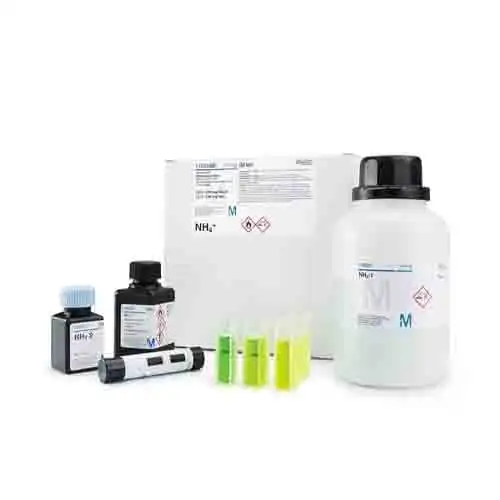
Cyanide Test, Merck
RM0.00Brand:
Merck
The method corresponds to DIN 38405-13 and is analogous to ISO 6703, EPA 335.2, APHA 4500-CN- E, and ASTM D2036-09 D.
This Spectroquant® Cyanide Reagent Test allows the accurate quantification of the free and readily liberated cyanide content in aqueous samples.
Method applied: Cyanide ions react with a chlorinating agent to form cyanogen chloride. In a follow-up reaction with 1,3-dimethylbarbituric acid in the presence of pyridine a violet dye (König reaction) is formed which is determined photometrically (only free cyanide. For readily liberated cyanide samples must be decomposed by digestion).
The Spectroquant® Reagent Test Kits contain highly stable, ready-to-use reagent mixtures to perform the analysis according to the procedure described in the accompanying instruction leaflet.
All our Cell and Reagent Test Kits are equipped with the unique Live ID which allows seamless method recognition and contains essential information such as lot number, expiry date, and automatic calibration updates.
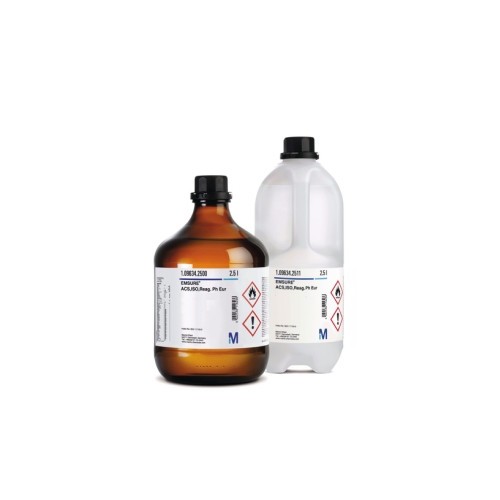
Cyclohexane for analysis EMSURE® ACS,ISO,Reag. Ph Eur (Merck)
Price range: RM87.00 through RM182.00Brand:
Merck
CAS no.: 110-82-7
Grade: For analysis EMSURE® ACS,ISO,Reag. Ph Eur
Chemical Formula: C₆H₁₂
Synonym: Hexahydrobenzene, Hexamethylene, Naphthene
Quality level: MQ300
Product specification and SDS for Cyclohexane for analysis EMSURE®.
Cyclohexane for liquid chromatography LiChrosolv®
RM828.00Brand:
Merck
Description
CAS number: 110-82-7
Chemical Formula: C₆H₁₂
Molar Mass: 84.16 g/mol
Synonyms: Hexahydrobenzene, Hexamethylene, Naphthene
With their high degree of UV transmittance, low particle count, low acidity and alkalinity and low evaporation residue level, LiChrosolv® solvents are ideal for reproducible separations. Since separations are normally carried out under gradient conditions in analytical HPLC, we offer solvents in “gradient grade” as well as “isocratic grade”. This enables to minimize the gradient effect of the solvent involved. Filtered by 0.2 µm filter
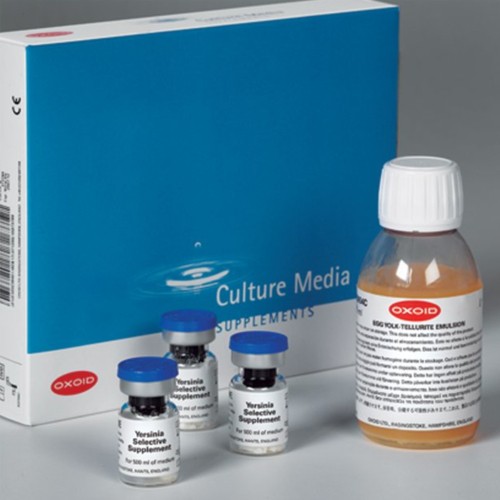
Cycloheximide (0.1%) Solution
RM135.00Brand:
Thermo ScientificTM OxoidTM
- Oxoid Cycloheximide Solution (0.1%) (100mg/vial) is used for the suppression of fungi.
- Add to Bacillus Cereus Selective Agar Base, Part No. CM0617B; Raka-Ray Agar Base, Part No. CM0777B; and Universal Beer Agar, Part No. CM0651B.
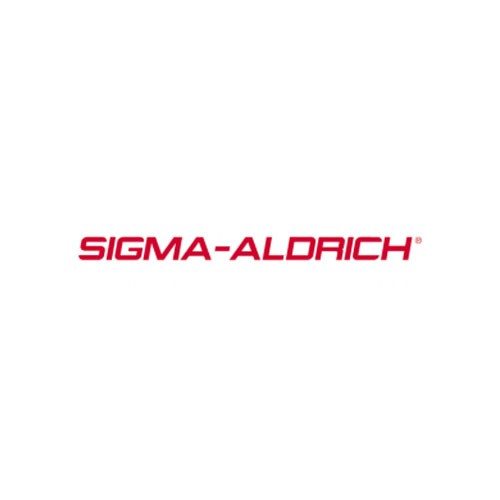
Cycloheximide from microbial, ≥94% (TLC) (Sigma-Aldrich)
RM424.00Brand:
Sigma-Aldrich
Description
CAS number: 66-81-9
Chemical Formula: C15H23NO4
Molar Mass: 281.35 g/mol
Synonyms: 3-[2-(3,5-Dimethyl-2-oxocyclohexyl)-2-hydroxyethyl]glutarimide, Actidione, Naramycin A
Application
In yeast strains, cycloheximide has been used as a protein synthesis inhibitor in the cycloheximide chase experiment. It has been used to inhibit translation in mammalian cells and suppress fungal growth.
Biochem/physiol Actions
Cycloheximide (CHX) is an antibiotic produced by S. griseus. Its main biological activity is translation inhibition in eukaryotes resulting in cell growth arrest and cell death. CHX is widely used for selection of CHX-resistant strains of yeast and fungi, controlled inhibition of protein synthesis for detection of short-lived proteins and super-induction of protein expression, and apoptosis induction or facilitation of apoptosis induction by death receptors.
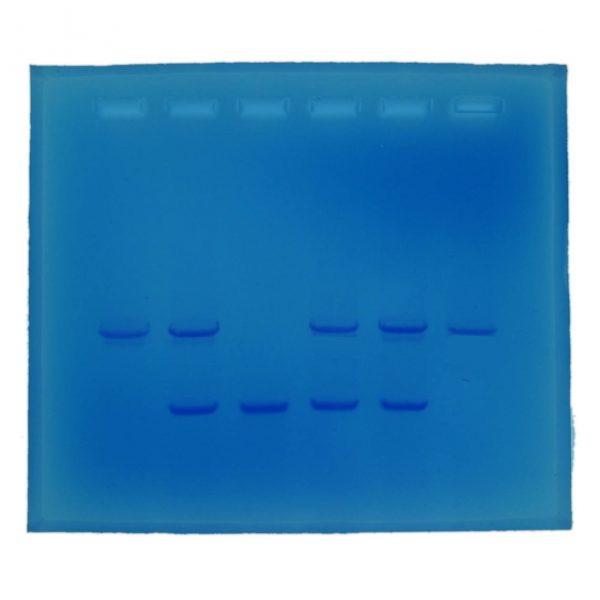
Cystic Fibrosis – Electrophoresis Education kit
RM0.00Brand:
Cleaver Scientific
Cystic Fibrosis is one of the most common genetic conditions in the UK. In this educational kit, students will learn about the basis of the disease, and run an agarose gel to seperate DNA samples from healthy patients, carriers of the disease and CF patients.
Each kit included enough DNA, agarose gel, electrophoesis buffer and DNA stain for up to 8 groups of students (8 gels).
Key Features
- Whole experiment takes less that 1 hour
- Great for introducing genetic diseases and genetic screening to students
- Works perfectly with Cleaver Scientific electrophoresis equipment
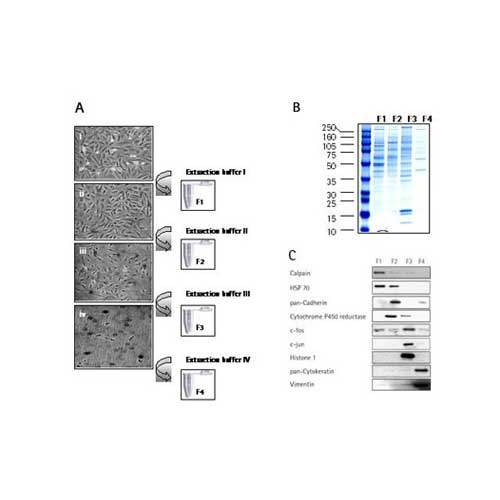
CytoBuster® Protein Extraction Reagent (for mammalian cell lysis)
RM487.00Brand:
Merck
Description
The CytoBuster™ Protein Extraction Reagent is a proprietary formulation of detergents optimized for efficient extraction of soluble proteins from mammalian and insect cells. The gentle, non-ionic composition of CytoBuster Protein Extraction Reagent enables isolation of functionally active endogenous or expressed proteins without a need for secondary treatment such as sonication or freeze/thaw. CytoBuster Protein Extraction Reagent has been specifically formulated for utilization in Western blotting, immunoprecipitation, and kinase/phosphatase assays. The reagent is compatible with protease inhibitors, kinase inhibitors, and phosphatase inhibitors.

Cytochrome C from Bovine Heart (Sigma-Aldrich)
RM924.00Brand:
Sigma-Aldrich
Description
CAS number: 9007-43-6
Application
Cytochrome c has been identified as an important mediator in apoptotic pathways. The release of mitochondrial cytochrome c into the cytoplasm stimulates apoptosis and is commonly used as an indicator of the apoptotic process in the cell. Investigation on the effect of Paris Saponin I (PS I) on human gastric carcinoma cell growth (SGC7901 cells) have shown an elevated level cytoplasmic cytochrome c. Results are inhibition of proliferation in SGC7901 cells by inducing mitochondria-dependent apoptosis through cytochrome c.
Biochem/physiol Actions
The ready interconversion of cytochrome c between ferrous and ferric states makes it an efficient biological electron carrier. It plays a vital role in cellular oxidations in both plants and animals. Generally regarded as a universal link in the respiratory chain, it forms the essential electron-bridge between the respirable substrates and oxygen.

Czapek Dox Agar (Modified) 500g
RM490.00Brand:
Thermo ScientificTM OxoidTM
Oxoid Czapek Dox Agar Modified is used for cultivation of fungi.
Czapek Dox Agar Modified, Oxoid Composition
| Typical Formula* |
gm/litre |
| Sodium nitrate |
2.0 |
| Potassium chloride |
0.5 |
| Magnesium glycerophosphate |
0.5 |
| Ferrous sulphate |
0.01 |
| Potassium sulphate |
0.35 |
| Sucrose |
30.0 |
| Agar |
12.0 |
| pH 6.8 ± 0.2 @ 25°C |
|
Czapek Dox Agar Modified, Oxoid Preparation:
Suspend 45.4g in 1 litre of distilled water. Bring to the boil to dissolve completely. Sterilise by autoclaving at 121°C for 15 minutes. Mix well before pouring. If required, adjust the reaction to pH 3.5 ± 0.2 by adding 10ml of Lactic Acid 10% (SR0021) per litre after sterilisation.
Storage conditions and Shelf life
Store the dehydrated medium at 10-30°C and use before the expiry date on the label.
Store the prepared agar plates at 2-8°C.

Czapek Dox Liquid Medium Mod. 500g
RM420.00Brand:
Thermo ScientificTM OxoidTM
Oxoid Czapek Dox Liquid Medium is used for cultivation of fungi.
Czapek Dox Liquid Medium, Oxoid Composition
| Typical Formula* |
gm/litre |
| Sodium nitrate |
2.0 |
| Potassium chloride |
0.5 |
| Magnesium glycerophosphate |
0.5 |
| Ferrous sulphate |
0.01 |
| Potassium sulphate |
0.35 |
| Sucrose |
30.0 |
| pH 6.8 ± 0.2 @ 25°C |
|
Czapek Dox Liquid Medium, Oxoid Preparation:
Add 33.4g to 1 litre of distilled water. Mix well and distribute into final containers. Sterilise by autoclaving at 121°C for 15 minutes.
Storage conditions and Shelf life
Store dehydrated medium at 10-30°C and use before the expiry date on the label.
Store the prepared agar plates at 2-8°C.
Store tubes of broth at 15-25°C.

